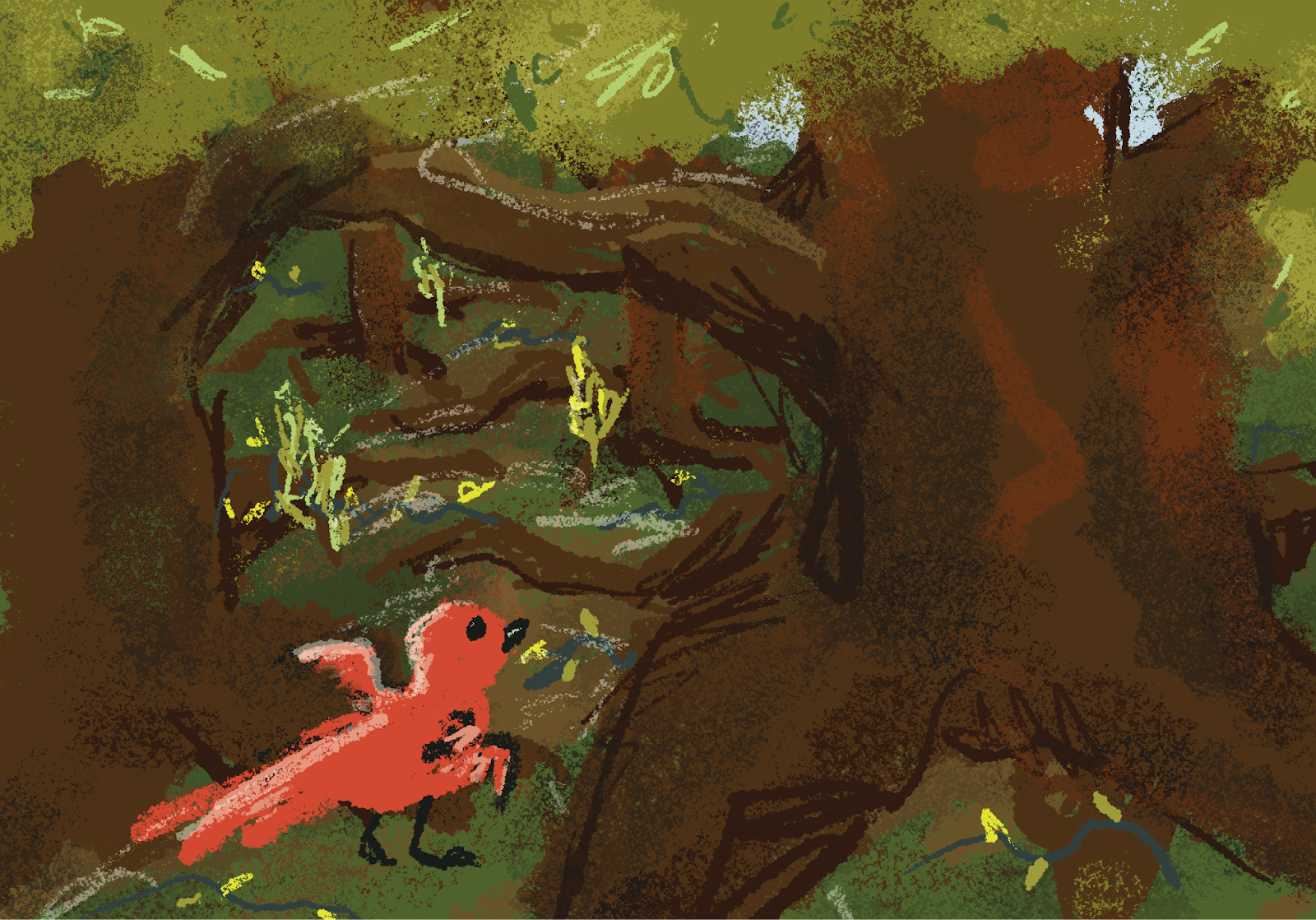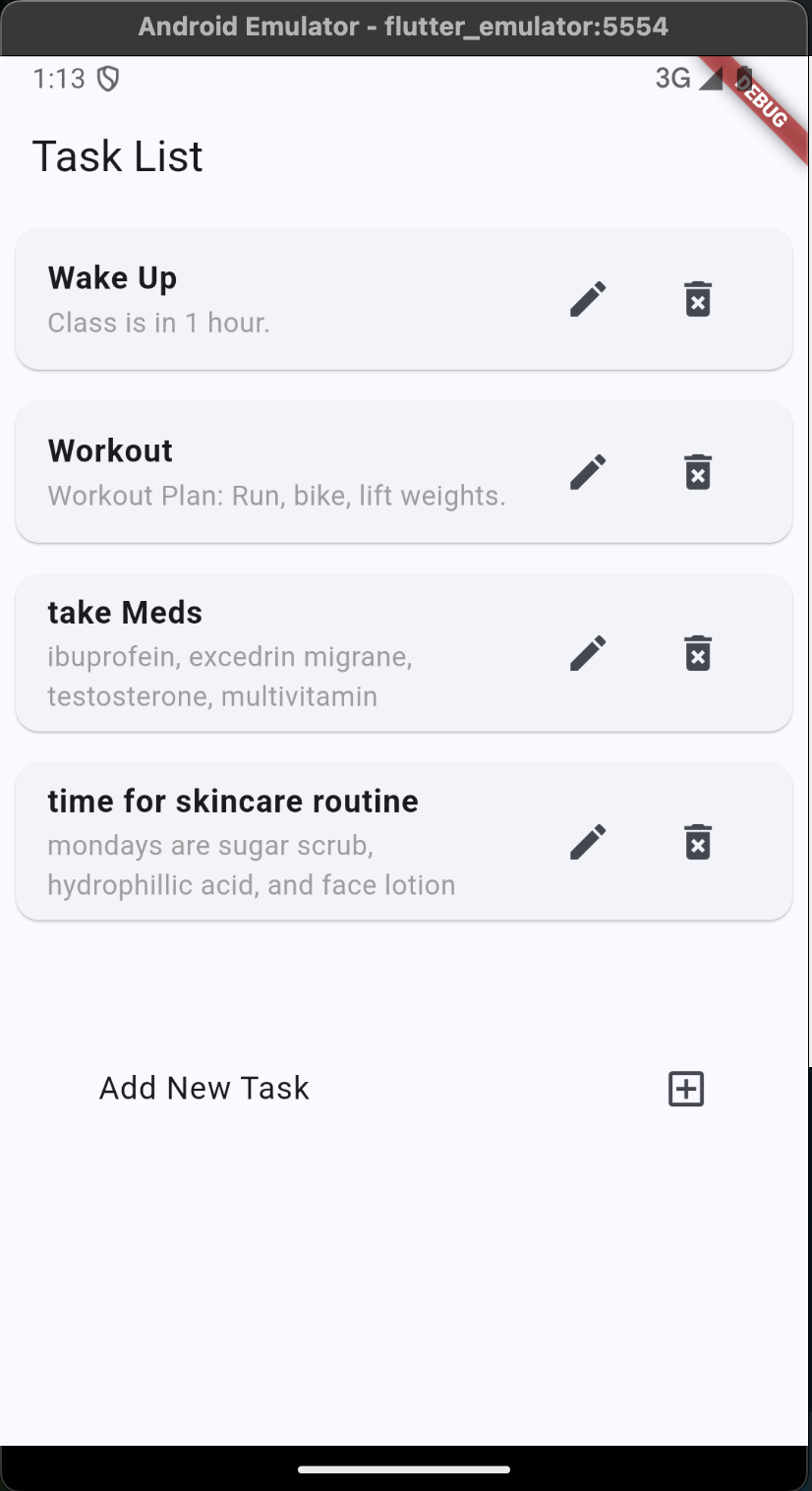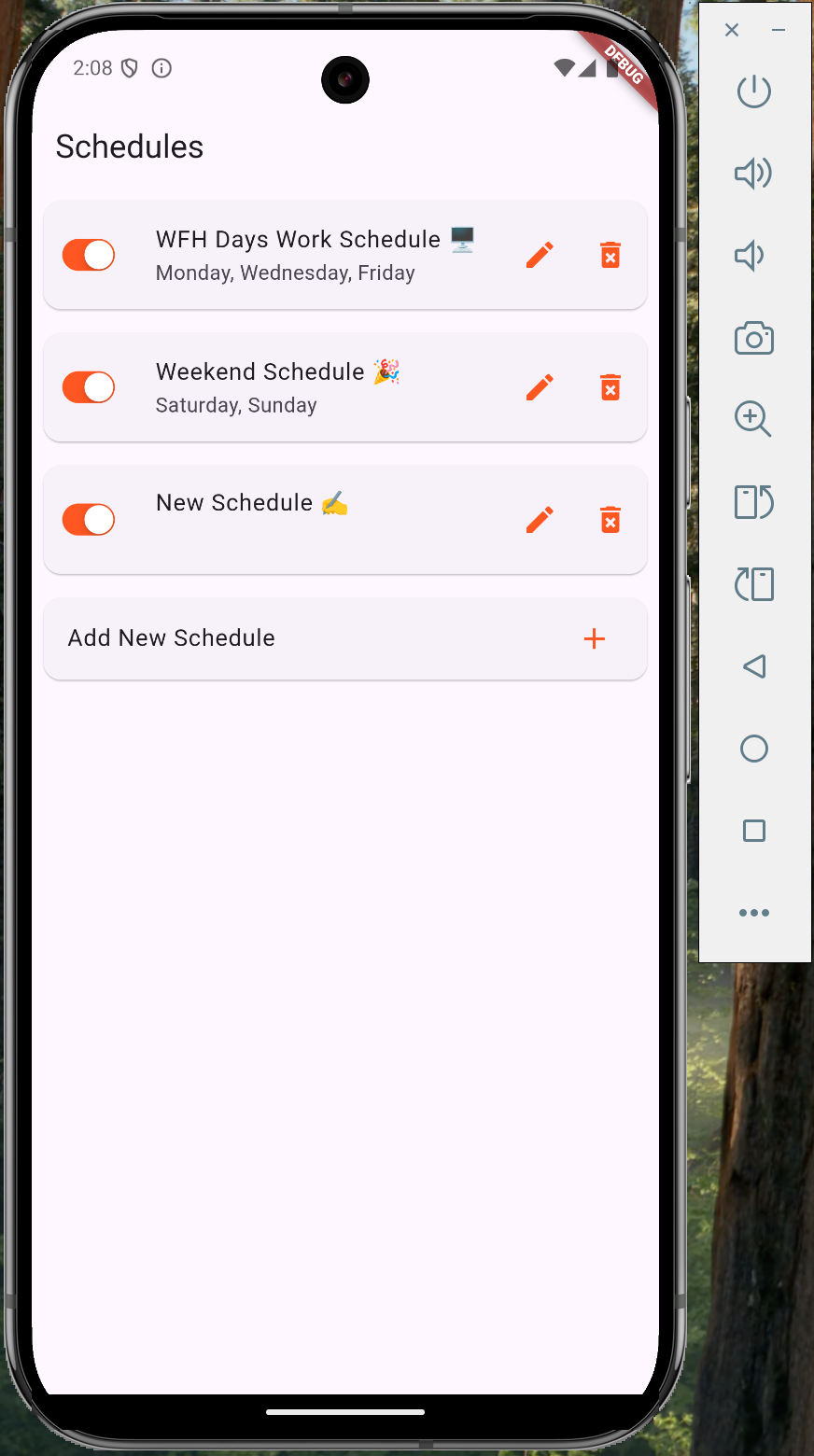Where did we come from?
MySpokenSchedules! originated as a response to Sean’s hilarious inefficiencies in managing daily alarms and
schedules. Thus, Dev Team 14 aimed to create a tool that could streamline notifications and daily schedules.
The project started with detailed user personas to guide development: a haphazard college student, a busy
professional, and a parent with a hectic schedule. These personas illustrated diverse needs, ranging from
schedule organization to personalized alarms and reminders, which laid the foundation for the app’s key
tasks.
Initial goals included customizable task sounds, including dynamic voice reminders, playlist playing
functionalities, and schedule lists. Schedules were intended to have non-repeating, day-repeating, and other
types of repetitions.
Early iterations of the app focused on the visual layout - we only dove into data storage midway through.
Where did we go?
Throughout development, we managed actual data storage for task creation, editing, and schedule management.
Alpha and beta versions of the app showcased clear progress, incorporating feedback to improve user
interactions and refine functionalities.
The app’s task system evolved to support label customization, message inputs, and specific time triggers.
Schedules allowed users to group tasks, assign them to particular days, and toggle their activation.
Notifications were refined to include dynamic AI voice readouts, providing clarity without requiring users
to touch their phones.
As the project advanced, key challenges such as emulator compatibility and the limitations of using Flutter
on non-Apple devices prompted pivots in design and functionality. Features were tested rigorously through
consultant sessions, ensuring they aligned with user needs.
Why Scaled Down, Changed, or Removed?
Adjustments were necessary to maintain focus and meet deadlines:
Spotify API and Sound Features: Originally envisioned as part of the app’s audio functionality, integrating
Spotify proved unfeasible due to the absence of an official API and its complexity. This feature was scaled
down to AI-generated voice readouts, which directly addressed the app’s core goal of delivering meaningful
notifications.
Location-Based Notifications: This feature was removed to streamline development and focus on time-based
triggers, which were deemed more critical by users.
Task Photos/Icons: While users expressed interest in customization options for icons, this feature was
deprioritized to avoid scope creep. We did, however, ensure emojis worked in task and schedule creation -
including them in the default “New Task” and “New Schedule” - so users could still have visual references
for their tasks.
These decisions allowed us to focus on delivering a cohesive experience, emphasizing the essential features
to make schedules that are spoken and customizable.
Lessons Learned?
The development of MySpokenSchedules! highlighted several key lessons:
-
Scope Management: Focusing on a manageable scope ensured the completion of core
features while maintaining quality. The removal of complex functionalities like Spotify integration
demonstrated the importance of aligning deliverables with project constraints.
-
User Feedback is Crucial: User testing sessions revealed unexpected insights, such as
the importance of simple visual features (light/dark mode) and intuitive design elements like the
Android time selector widget.
-
Technical Readiness: Early setup of development environments, including compatibility
with emulators, is vital for minimizing technical roadblocks. Our team had initially planned to do iOS
development - however, realizing that Xcode did not work on non-Mac laptops, and that some laptops
struggle to get an emulator up in a timely manner, delayed development.
-
Collaboration and Modularity: Assigning special features, like the AI-voice or
Notifications, to particular team members ensured accountability and decreased the amount of research
the team had to be familiar with as a whole.
What is MySpokenSchedules! now?
MySpokenSchedules! is a scheduling tool that provides dynamic voice notifications, customizable task
creation, and flexible schedule management. Users can create schedules that align with their routines, set
personalized messages for tasks, and receive AI-generated voice reminders at specified times. The app
prioritizes a distraction-free experience, allowing users to stay on track without needing to interact
directly with their devices.
While some features from the initial vision were scaled back, the app successfully delivers on its core
promises, making it a valuable tool for users seeking an intuitive and efficient scheduling solution. It
reflects a thoughtful balance between ambitious goals and practical constraints, embodying our commitment to
user-centric design and iterative improvement.
Since freshman year of college, I planned to make a game that would delve into flying mechanics in
platforming, while also speaking to personal themes via the framing device of the woodlands, and their
creatures. Senior year comes along, with my DNID English Capstone class, and it’s finally time to create the
game that would become An Attempt to Fly.

The class structured itself for me to think differently about my game. Instead of thinking of it in a
vacuum, for myself - to instead open my ideas up into and ground my work in the broader context of players,
pre-existing media, and historical research. I found inspiration in the Open Doors for the Handicapped ULS
Archive. Particularly, in the way that different mobility aids were marketed (FashionAble), and the
historical reports of what benefits those that are handicapped, and how the accommodations are often
misaligned (THE IMPACT OF SECTION 504).
In our case studies of other media in the field we were entering into, I found inspiration in How to Train
Your Dragon, and A Short Hike. How to Train Your Dragon was inspiring narratively for its focus on
disability and overcoming it in creative ways. I was inspired by A Short Hike for its level design,
controller compatibility, and movement system. With these inspirations, I was able to iterate upon my
concept to more fully flesh out the narrative with fictional and historical aspects, and improve the
movement design of my game.
My development continued, now with the goal to inspire others to keep the creativity and drive to keep
finding unique ways through their situations. Just like I had seen in fiction with How to Train Your Dragon,
and in history, with Open Doors for the Handicapped.
Early development focused on the movement system and engaging level design. Separately, a portion of the
narrative was written. User feedback was vital in iterating upon these. Narratively, the largest point of
confusion from readers was “You” as the main character’s name and a reference to the reader simultaneously.
Through workshopping, I landed upon “Yu” - so the word could better communicate as a name.
Initially, the camera was fixed in one position behind the player. Through user testing, seeing players
struggle to navigate around a 3D tree when the camera was only facing one direction, it was clear users
needed a movable camera. In user testing after implementing the first version of camera controls, I received
feedback to shift camera controls from a simple rotational model because orbiting in the y axis can be
confusing. Constraining the Y-axis movement to just a tad away from above, and just a tad away from below
the character model assisted in player’s understanding the game’s controls and the level itself - assisting
players to get lost less often.
More design iterations focused on the level design itself. The main challenge for this vertical slice of the
game was to climb a tree. This tree started out using planes - which players found very confusing during
playthroughs, as one could not see the planes from their underside. Additionally, in this type of game - it
was not intuitive to players they could jump through a platform. I made the decision I did not want the
ability to jump through platforms in this world. As a result, I made use of 3D objects instead of planes -
modeling the tree trunk and branches myself. Additionally, I brought platforms closer together to make
scaling the tree more possible, and varied the shape of platforms to make cerebral challenges in
platforming.
Ultimately, my game at the showcase garnered a lot of positive attention for its story, expansive world, and
platforming challenge. However, if I want this game to achieve its goal of inspiring others to keep trying
in their own lives, more revisions of the game are needed. I project adding in the rest of the narrative
would help in this - as the story could speak to perseverance in Yu’s life.
An Attempt to Fly is a culmination of my DNID experiences, particularly in the department of games. This
project flexed my research, critical study, writing, programming, and creative muscles - all key aspects of
DNID. It also served to use my video game art skills - which I have been building over the course of my
college career. This game serves well as a capstone as it shows my ability to create a game from start to
finish - the writing, designing, production, art, and programming. This capstone speaks well to my
versatility and ability to get larger projects done.
An Attempt to Fly fits in with the DNID Capstone class values in its end-of-semester form largely by
showcasing the risks taken to create a better experience for the player-user. This iteration includes many
asked-for changes: a movable camera, with cleaned-up vertical movement, a main tree platforming challenge
with complex platforms, and with the added challenge of leaves blocking a player’s view at some angles. The
class itself enforced testing, synthesizing, reflecting upon feedback, and iterating our projects. Without
these aspects, my project would not have gotten to where it is now. While not directly visible in the
project - throughout this class my favorite value to exemplify was seeking and sharing knowledge. I very
much appreciated getting advice from my peers, and helping my peers where I could. This aided the trajectory
of all projects in this class - but, and even more favorably in my own eyes, fostered a community within
class. My favorite times in class were seeing people’s projects and sharing information about them. I will
never forget those memories. The last quality my end-of-semester version of An Attempt to Fly exemplifies is
wellbeing, because its author did not die via the ceiling tile (yet).



